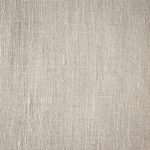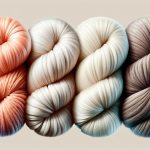Many people underestimate the impact of abrasion resistance on the longevity of natural fibers. While some materials might feel soft or look appealing, their ability to withstand wear and tear varies considerably. If you’re curious about which fibers provide the best durability for your projects or wardrobe, understanding the strengths and weaknesses of options like hemp, wool, and linen could be key to making the right choice. Let’s explore what sets these fibers apart.
Table of Contents
Key Takeaways
- Hemp fibers are the strongest natural option, ideal for heavy-duty applications due to their exceptional durability.
- Linen offers high durability and absorbency, making it suitable for various conditions, though less flexible than cotton.
- Wool provides elasticity and resilience, reducing damage and maintaining fabric structure over time.
- Tighter weaves significantly enhance abrasion resistance by minimizing fiber movement, leading to longer-lasting fabrics.
- Cotton-blend fabrics balance comfort with durability, but may wear out faster than other natural fibers alone.
Overview of Natural Fibers and Their Durability
When you think about durability in textiles, natural fibers often come to mind because they offer unique properties that enhance their resilience.
Cotton, for instance, is known for its softness and breathability but can also endure wear and tear. Wool, with its natural elasticity, resists fraying and maintains its structure over time.
Linen stands out for its ability to withstand high temperatures, making it a great choice for durability in various conditions. Hemp fibers are incredibly strong and require minimal processing, further enhancing their longevity.
Each of these fibers not only provides comfort but also benefits sustainability, as they’re biodegradable. By choosing natural fibers, you’re investing in materials that can withstand the test of time while being environmentally friendly.
Key Factors Influencing Abrasion Resistance
Although many factors contribute to abrasion resistance, the fiber’s structure and composition play a pivotal role in determining its durability.
For instance, tightly packed fibers can enhance strength, while loose arrangements may lead to quicker wear. The diameter of the fibers also matters; finer fibers can create a softer feel but mightn’t withstand friction as well as thicker ones.
Tightly packed fibers offer enhanced strength, while finer fibers provide softness but may wear faster under friction.
Moisture content can impact performance too, as it affects the flexibility and resilience of the fibers. Additionally, the presence of natural oils can provide a protective layer, adding to durability.
Finally, the way fibers are spun and woven influences their overall strength and resistance to abrasion. Understanding these factors can help you choose the right natural fiber for your needs.
Comparison of Cotton, Hemp, and Linen
When comparing cotton, hemp, and linen, you’ll notice significant differences in durability and strength.
Each fabric boasts unique abrasion resistance characteristics that can impact your choice for various applications.
Understanding these differences can help you select the right material for your needs.
Durability and Strength Comparison
Durability is a key factor to take into account when comparing natural fibers like cotton, hemp, and linen. Each fiber has its strengths, making them suitable for different applications. Here’s what you should know:
- Cotton: Soft and breathable but can wear out faster than the others.
- Hemp: Known for its incredible strength and longevity, making it ideal for heavy-duty use.
- Linen: Strong and absorbent, it resists mildew but can be less flexible than cotton.
- Cotton-blend fabrics: Often combine durability with comfort, offering a balanced performance.
- Environmental impact: Hemp typically requires fewer resources, making it a more sustainable choice.
When choosing a fiber, consider what matters most for your needs: comfort, strength, or sustainability.
Abrasion Resistance Characteristics
Abrasion resistance is essential for determining how well a fabric can withstand wear and tear over time.
When you compare cotton, hemp, and linen, you’ll notice distinct differences in their abrasion resistance characteristics.
Cotton, while soft and breathable, tends to wear out faster, especially in high-friction areas.
Hemp, on the other hand, is known for its incredible strength and durability, making it more resistant to abrasion and ideal for heavy-duty applications.
Linen also offers decent abrasion resistance, but its smooth texture can lead to quicker wear compared to hemp.
Ultimately, if you prioritize longevity and resistance to damage, hemp is your best bet, while cotton may be better suited for lighter, less demanding uses.
The Role of Wool and Silk in Abrasion Resistance
While many fabrics struggle with wear and tear, wool and silk stand out for their unique properties that enhance abrasion resistance.
You’ll find that both fibers offer impressive durability, each in different ways. Wool can bend and stretch without breaking, giving it a resilience that’s hard to beat. Meanwhile, silk’s natural smoothness helps it glide against surfaces, reducing friction and wear.
Here are some key points about their abrasion resistance:
- Wool’s crimp offers elasticity, preventing damage.
- Silk’s smooth texture minimizes friction.
- Both fibers wick moisture, reducing degradation.
- Natural oils in wool enhance its lifespan.
- Silk is lightweight yet surprisingly strong.
These features make wool and silk ideal choices for anyone looking to invest in durable textiles.
Unique Strengths of Leather in Protective Applications
Leather shines as a top contender for protective applications due to its remarkable strength and versatility. When you choose leather, you’re not just opting for style; you’re investing in durability. Its natural properties, including abrasion resistance and flexibility, make it ideal for various protective gear, from motorcycle jackets to work gloves.
| Feature | Benefit | Emotional Impact |
|---|---|---|
| Durability | Withstands wear and tear | Confidence in protection |
| Comfort | Molds to your body | Feel secure and at ease |
| Breathability | Allows airflow | Enjoy comfort in any climate |
| Timeless style | Always in fashion | Pride in your choice |
With leather, you get the perfect blend of functionality and style, ensuring you’re protected while looking great.
Enhancing Abrasion Resistance of Natural Fibers
To enhance the abrasion resistance of natural fibers, you can explore various fiber blending techniques that combine different strengths.
You’ll also want to contemplate the effectiveness of surface treatments, which can greatly improve durability.
Additionally, the importance of weave density can’t be overlooked, as it plays a vital role in the overall performance of the material.
Fiber Blending Techniques
When enhancing the abrasion resistance of natural fibers, fiber blending techniques play an essential role in achieving ideal performance.
By combining different fibers, you can create a material that benefits from the strengths of each component. Here are some key techniques you should consider:
- Combining Strengths: Blend robust fibers like hemp with softer ones like cotton for durability and comfort.
- Balancing Properties: Achieve a balance between weight and strength by mixing lightweight fibers with heavier counterparts.
- Enhancing Flexibility: Use elastic fibers to improve the flexibility of stiff natural fibers.
- Layering Techniques: Create multi-layered fabrics for enhanced protection against wear.
- Color and Texture: Experiment with blends for unique aesthetic qualities while maintaining performance.
These strategies can greatly improve the abrasion resistance of your materials.
Surface Treatments Effectiveness
Blending fibers enhances performance, but surface treatments can take abrasion resistance to the next level.
These treatments involve applying a protective coating or chemical process that strengthens the fiber’s surface. When you use natural fibers like cotton or hemp, adding treatments such as silicone or polyurethane can greatly improve durability.
These coatings create a barrier against wear and tear, increasing the fabric’s lifespan. You’ll also notice that treated fibers tend to resist stains and moisture better, making them suitable for various applications, from clothing to upholstery.
Weave Density Importance
While many factors contribute to the abrasion resistance of natural fibers, weave density plays an essential role in determining how well a fabric can withstand wear and tear. A tighter weave enhances durability, as the fibers are closely packed, minimizing movement and friction during use.
Here’s why you should consider weave density:
- Increased durability: Tighter weaves resist fraying and tearing.
- Better performance: Higher weave density leads to superior abrasion resistance.
- Improved appearance: Fabrics maintain their look longer with reduced wear.
- Enhanced comfort: Denser weaves can provide a smoother feel against the skin.
- Versatile applications: Stronger fabrics are suitable for various uses, from clothing to upholstery.
Best Practices for Selecting Natural Fibers for Durability
Selecting the right natural fibers for durability requires careful consideration of several factors, as these choices greatly impact the lifespan and performance of your products.
First, assess the fiber’s inherent strength; options like hemp and linen are known for their robustness.
Assessing inherent strength is crucial; robust options like hemp and linen stand out for their durability.
Next, consider moisture resistance—cotton may not hold up well in humid conditions.
Look into the fiber’s abrasion resistance; for instance, ramie is often more durable than silk.
Also, think about environmental factors, such as exposure to sunlight or chemicals, which can degrade certain fibers faster.
Finally, test the fibers in real-world applications to gauge performance.
Frequently Asked Questions
How Do Natural Fibers Compare in Environmental Sustainability?
When you compare natural fibers for environmental sustainability, you’ll find that organic cotton, hemp, and linen often lead. They’re biodegradable, require less water, and contribute less to pollution compared to synthetic alternatives. Choose wisely!
Can Natural Fibers Be Treated to Improve Water Resistance?
Yes, you can treat natural fibers to enhance water resistance. Methods like applying wax, silicone, or specialized coatings can greatly improve their ability to repel water, making them more versatile for various applications in wet conditions.
What Are Common Applications for Durable Natural Fibers?
You’ll find durable natural fibers used in various applications like ropes, outdoor fabrics, upholstery, and eco-friendly packaging. They’re popular for their strength, sustainability, and ability to withstand wear in demanding environments, making them versatile choices.
How Does Weather Affect the Performance of Natural Fibers?
When it rains, it pours, and weather can greatly impact natural fibers’ performance. Moisture can weaken them, while UV rays cause fading. You’ll want to take into account these factors when selecting materials for outdoor use.
Are There Certifications for Natural Fiber Durability?
Yes, there’re certifications like OEKO-TEX and Global Organic Textile Standard that assess natural fiber durability. These certifications guarantee the materials meet specific standards for performance, safety, and environmental impact, giving you confidence in your choices.
- Recycling Nonwoven Fabrics: Is It Possible? - July 11, 2025
- Recycling Nonwoven Fabrics: Is It Possible? - July 11, 2025
- Recycling Nonwoven Fabrics: Is It Possible? - July 11, 2025







